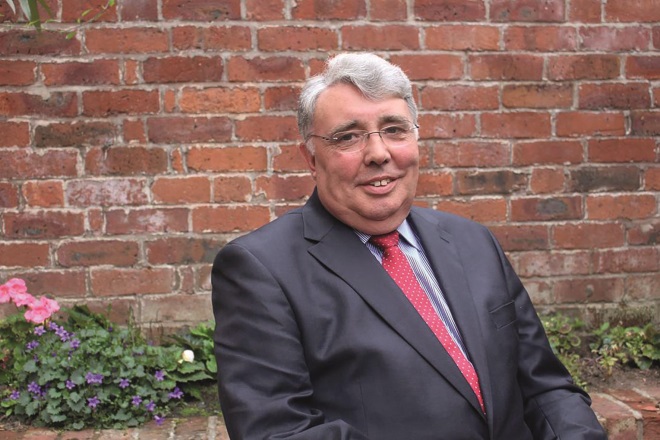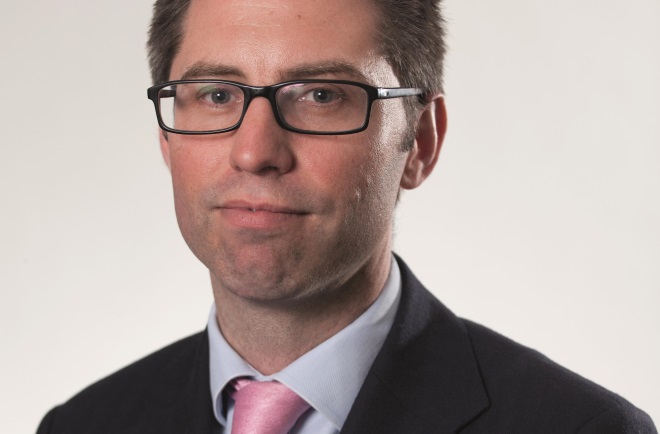
Craig Holmes Premium / Alamy
The types of services offered by pharmacies within the NHS are expanding, which means that all members of the pharmacy team need to attain new competencies and skills. The British pharmacy regulator, the General Pharmaceutical Council (GPhC), is redefining educational standards to meet the changing needs of the pharmacy workforce.
In June 2015, the GPhC published a discussion paper in which it analyses policies for health, pharmacy and pharmacy education provision in England, Scotland and Wales. The document entitled ‘Tomorrow’s pharmacy team; future standards for the initial education and training of pharmacists, pharmacy technicians and pharmacy support staff’[1]
, draws some preliminary conclusions on the future roles of the pharmacy team and the education and training they will need.
This 12-page document, which identifies that pharmacists need to be ‘patient-centred’ clinicians, able to work in multi-professional teams and need to adapt to working in varied settings, also serves to inform a consultation set to conclude on 14 August 2015. So we asked several prominent academics and a student organisation what skills and abilities they thought pharmacists would need in the future and how education and training needed to change to deliver that.

Source: University of Manchester
Pharmacy students have almost no exposure to practice in the early years, says Peter Noyce, professor of pharmacy practice at the University of Manchester
Peter Noyce, professor of pharmacy practice at the University of Manchester, was co-chairman of the board of the Modernising Pharmacy Careers programme, set up in 2009 to provide advice to Medical Education England (now Health Education England) and the Department of Health on pharmacy education, training and national workforce planning. He says pharmacy students “have almost no exposure to practice in the early years”, which is why the MPC board recommended merging the preregistration year with the four year undergraduate degree to make a five year course, something that has already happened at several universities. It proposed more practice-based training and interprofessional learning in the early years, with students going out into six-month practice placements in their fourth and fifth years of study.
Not only would this expose students to practice earlier, it would also raise the quality of preregistration training which “is the weak link at the moment”, says president of the British Pharmaceutical Students’ Association Lottie Bain.
The level of exposure to clinical practice offered by universities currently is very limited, highly variable, and out-of-synch with other health degrees — such as medicine, physiotherapy and nursing where students go on placements as part of their degree, says Bain. In pharmacy, students at some universities may get a two-week hospital placement but the vast majority will not, with students experiencing as little as three half days in practice in a year. This is not enough time, she says: “We need to integrate placements much earlier on in the degree and they should not be half-day ‘watch the pharmacist work’, but actual placements where you’ve got hands-on experience to actually learn something valuable.”

Source: University of Manchester
Professionalism cannot be learned through lectures, says Ellen Schafheutle, senior lecturer in law and professionalism in pharmacy and director of the Centre for Pharmacy Workforce Studies at the University of Manchester
Ellen Schafheutle, senior lecturer in law and professionalism in pharmacy and director of the Centre for Pharmacy Workforce Studies at the University of Manchester, says that when students talk about how they learn professional skills, such as problem solving and communicating with patients when dispensing medicines — they say that they are taught in a classroom but actually learned from Saturday jobs and summer placements. “Professionalism is learned in practice, it is not learned in a lecture,” she says.
Researchers at the University of Manchester followed students and their tutors through the preregistration years and into practice and found that students experienced a steep learning curve going into practice during the preregistration year, and again on registration[2]
.
“The knowledge is all there but they struggle to know which drawer to open in their brain, and which ones to pull out and bring together to solve a problem,” Schafheutle explains. Students say that they have the clinical knowledge to do this, but that they lack confidence in applying that knowledge and communicating effectively with patients and other health professionals.
But what is most concerning for students is the lack of regulation of training during the preregistration year. Bain says: “It’s no one’s responsibility to ensure the quality of prereg tutors and to make sure that the training provided is up to standard.” As a result, students’ experiences vary widely and there is no mechanism to feedback poor experiences. She is optimistic that integrating the preregistration year into the degree will add some quality assurance.
Consistency counts
Currently, the GPhC accredits training premises, they set competencies that must be met and they ask to see a copy of the intended training plan for the year, explains Bain. The only requirement for tutors is that they need to have been qualified for three years; they don’t need to have any kind of training in providing education. The GPhC has some guidance for tutors and the Royal Pharmaceutical Society (RPS) is developing some; but guidance is optional Bain says, what is needed is some form of regulation to ensure consistent standards. Many of these issues, including the need to define standards for practice-based training, assess tutor competencies and quality of training, and provide a feedback mechanism for students, were identified in 2013 by research funded by the RPS[3]
.
The pass rate for the registration assessment was 74% in June 2015 compared with 85.3% in June 2014, and Bain attributes the higher failure rate on the fact that preregistration training is not preparing candidates adequately for the exam. A particular issue is the confidence to make decisions, she explains. The exams are moving more towards scenario-based questions, and pharmacy training is not instilling the confidence in students to make decisions and not always to refer people to other healthcare professionals, she says.
Much of the pharmacy undergraduate programme in universities is taught by non-pharmacists and non-clinicians. “In a number of schools the number of pharmacists would not be over half of the faculty, so that actually means the student can end up having quite a low exposure to practice but also low exposure to pharmacists,” Noyce says. “In comparison with other health disciplines — whether it be medicine, nursing, physiotherapy or dietetics — many more of their practitioners are involved in education, whereas the majority of pharmacy practitioners are not.”
The reason why exposure to pharmacists and clinicians early on is important is because we’re looking for skills development rather than simply knowledge, he adds. “That’s quite a big paradigm shift from traditional teaching within the pharmacy undergraduate course.
“If you look at prescribing, for instance, once you’ve got the clinical knowledge of the medicines, it’s about communication, consultation, decision-making skills. It’s actually having those skills to apply that knowledge.”
Undergraduate training also needs to be centred on patients, Noyce says, to teach pharmacists to think of treatment from a patient’s point of view, to see a condition in the wider medical and social context, and not to see “the treatment milieu as medication only”. For example, to consider changes to diet and exercise for patients with long-term conditions, such as diabetes and hypertension.
“Patient centredness is absolutely critical in terms of future education as well as an awareness of a multidisciplinary perspective,” says Noyce. “If students are not exposed to multidisciplinary learning and the multidisciplinary perspective of a patient, then it’s not surprising that they see things only through the eyes of medication,” he says.
Learning should not just be interprofessional it also needs to be intraprofessional, and the GPhC has recognised this; for the first time, the GPhC is attempting to look at education and training for pharmacists, pharmacy technicians and pharmacy support staff collectively to give greater clarity on how they interrelate.

Source: General Pharmaceutical Council (GPhC)
The GPhC works in the three-countries system and has explicitly said it’s not looking for a one-size-fits-all model, says Hugh Simpson, director of policy and communications at the GPhC
Hugh Simpson, director of policy and communications at the GPhC, says: “It’s not a coincidence that we identified team working as something that all three groups need. Thinking about standards of education and training for the three groups separately didn’t seem sensible.” Research shows that pharmacists are reluctant to hand over traditional activities — such as tasks related to dispensing — that could be performed by non-pharmacist staff, particularly pharmacy technicians[4]
.
Pharmacists also need a better understanding of health at a population level, Noyce asserts, including public health, epidemiology and the impact of demographic changes (the needs of certain social groups such as immigrants who have a poor standard of English and come from a different healthcare system).“Pharmacists tend to be fairly didactic and instructional rather than interactive, in the sense of reflecting what the patient’s behaviour or their priorities are, so some of that health psychology is actually really important. Obviously in terms of patient adherence but more generally as well in terms of public health,” he says.
And it is also important to ensure that there are appropriate jobs available for pharmacists qualifying with these new skills. Research from the University of Manchester published in 2009[5]
has already shown that pharmacists in the first couple of years post registration express frustration that their clinical training is not being used and consider quitting the profession, Schafheutle says.
To provide the skills that future practitioners need, universities will have to move from courses that predominantly offer knowledge to courses with a greater emphasis on skills. “If there is going to be a significant shift in clinical teaching and patient centredness, all the schools of pharmacy are going to have to build practice and clinical capacity,” Noyce says. Putting this in place will be a much greater challenge for institutions that do not offer health sciences or medical sciences but have a science and technology focus.
And with the preregistration year likely to merge with the undergraduate degree creating a longer course, universities will need to cater for greater numbers of students. He predicts that instead of universities deciding how many students they have the capacity to take, an educational body such as Health Education England will specify how many preregistration training posts will be available, effectively imposing a cap on student numbers. In Scotland, preregistration training is already organised centrally, with funding held by NHS Education for Scotland (NES). This is a good system, Noyce says, as it adds greater quality control. “A prereg supervisor has to meet the criteria that NES sets to be allocated a prereg.”
It is unclear whether there is likely to be greater divergence in pharmacy education across Great Britain. “We work as a regulator in the three-countries system and have explicitly said that we’re not looking for a one-size-fits-all model,” Simpson says. “It is up to the NHS in England, Scotland and Wales to determine how they might want to take forward structure and funding issues.”
However, he adds that there is consistency in terms of what the NHS and governments in Scotland, Wales and England are looking for. “They’re all talking about the challenges around public health; they are all talking about a greater role for pharmacists within primary care; they’re all talking about a greater clinical role. The visions for implementation may differ slightly but from an education point of view those are interesting but probably not as worrying as if there had been a difference of view about what the expectations of pharmacists and the rest of the pharmacy team had been.”
The GPhC is in no doubt that pharmacy courses will need more emphasis on team working, communication, professionalism and skills and wants to hear from people involved in the delivery of those courses about what the challenges might be. “Can you deliver within the current structure of pharmacy education and training and, if not, what would need to change,” Simpson asks.
The GPhC will draft new educational standards, based on the results of the consultation, and expects to publish them for consultation in 2016, with the aim of beginning to implement them in 2017.
- A caption in this story was amended on 7 August 2015 to better reflect the opinion of Hugh Simpson, director of policy and communications at the GPhC.
References
[1] The General Pharmaceutical Council. Tomorrow’s pharmacy team: Future standards for the initial education and training of pharmacists, pharmacy technicians and pharmacy support staff . GPhC. June 2015.
[2] Jee SD. The process of professional socialisation and development of professionalism during pre-registration training in pharmacy. PhD thesis, the University of Manchester. 2014.
[3] Mills E, Blenkinsopp A, Black P. Quality management in pharmacy pre-registration training: recommendations for the future. Pharmacy Education. 2013;13(1):87–92
[4] Bradley F, Schafheutle EI, Willis S, et al. Changes to supervision in community pharmacy: pharmacist and pharmacy support staff views. Health & Social Care in the Community. 2013;21:644–654.
[5] Eden M, Schafheutle EI, Hassell K. Workload pressure among recently qualified pharmacists: an exploratory study of intentions to leave the profession. International Journal of Pharmacy Practice 2009;17:181–187.


